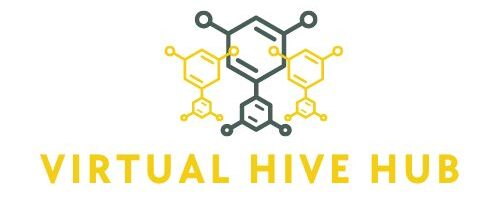In our digital age, dealing with documents can seem overwhelming. Yet, with a document management system (DMS), organizations can make things much easier. This tool comes with many features that can change how companies work with their documents. It improves organization, access, security, and the ability to work together1.
A DMS is a central hub for storing and managing documents. It gets rid of the need for physical files. Now, everything is safe and easy to find digitally1. No more searching through stacks of paper or digital folders. With a DMS, everything is sorted neatly, saving a ton of time and boosting productivity2.
Key Takeaways
- Streamline your document management with a centralized system
- Enjoy a 40% increase in productivity due to streamlined workflows2
- Enhance collaboration among remote teams for faster decision-making2
- Improve data security and compliance with industry regulations2
- Reduce paper usage and administrative overhead for significant cost savings2
What are Document Management Systems?
Document Management Systems (DMS) are like digital magic for businesses. They change how companies keep, find, and share their documents. Think of it as a digital filing cabinet. It helps team work together better, keeps documents safe, and makes work smoother34.
Definition and Purpose
A DMS is a lively, smart digital filing cabinet. It’s defined as “information or object which can be treated as a unit” by ISO 12651-24. These systems make sure all important documents are in one secure place. This includes everything from contracts to reports5.
Centralized Storage and Organization
Picture this. A DMS puts all your documents in one easy-to-search place4. No more searching in real filing cabinets. This means finding, updating, and keeping track of documents is much easier. Plus, it uses OCR to change images into text, making finding documents even simpler3.
But wait, there’s more. DMS let you organize files with tags and categories. You can even search using metadata and keywords. This makes sure important files are always close by. It helps everyone work faster and better5.
“Document management systems can range from small, standalone systems to large scale enterprise-wide configurations.”4
So, whether a company has a few documents or a mountain of them, a good DMS is key. It can grow with the business. This makes it essential for any company, big or small4.
Key Benefits of Document Management Systems
Document management systems (DMS) offer many benefits. They make work simpler and increase productivity. These tools improve collaboration, version control, document security, and regulatory compliance6.
Improved Collaboration and Accessibility
A DMS is great for teamwork. It stores all documents in one place, making it easy for team members to share and work together. With everyone on the same page, teamwork flows smoothly7.
Version Control and Tracking
Tracking document versions is usually hard. But with a DMS, it’s easy. You can see changes, go back to old versions, and make sure everyone uses the latest info. This saves time and avoids mistakes7.
Enhanced Security and Compliance
Keeping documents safe is crucial. DMS offers strong security like user permissions and encryption. It also helps you follow laws, stopping costly problems678.
Using a DMS has many rewards. It makes work smoother, boosts teamwork, and protects data. Choosing a DMS can lead your business to operate better and thrive.

Essential Features to Look for
When you pick out a document management solution for your business, it’s key to look at several important features. These features can help make your work easier and boost how well you do things9. A top feature is having a strong system for storing and organizing documents. This includes making folders, tagging files, and searching for them easily9. For example, 85% of organizations say being able to search documents well is vital. It makes things run smoother9.
It’s also important to have version control. This lets you see changes made to documents and make sure everybody is using the latest version9. About 82% of document systems can track changes. This is useful because it reduces confusion and betters teamwork10.
Moreover, having strong security and access features is crucial for keeping your info safe11. When looking for a system, ensure it allows you to control who sees what and has top-notch security measures in place11. It might surprise you, but 68% of organizations rank the ability to lock files as an important security feature9.
Don’t forget about drag-and-drop for easy document management9. Also, look for tools that let you view and edit documents directly in the system9. Document sharing and rating are big pluses for working together well9. Some systems even let you link documents together or notify you about any changes9.
By making sure your pick has these key features, your document system will fit your business’s needs well. It will make your work run smoother10.
“Implementing the right document management system can help organizations save time, money, and resources.”10
Document Management Systems
Today, document management systems are a must for all businesses. They have changed how work is done and made it easier. These systems help to turn paper documents into digital files, neatly organizing and keeping them safe. This boosts productivity and cuts down on costs while making sure you follow the rules12.
The key is that these systems gather all your documents in one place digitally. No more searching through piles of paper. Instead, you get quick and secure access to everything you need13.
But, storing documents is not all they do. These systems come packed with features that can transform how your business works12. They keep your information safe with encryption and control who can see what. Plus, they track changes to the documents over time to make sure everything is up to date13.
Adding artificial intelligence (AI) and machine learning makes these systems even better12. They capture information from documents automatically. This means less manual work and better workflow. It all adds up to making your work run smoother and more effectively12.
Document management software is always getting better14. As it grows, it offers new opportunities for your business. Things like more collaboration, better security, and increased productivity. By using these new tools, your business can keep up and thrive in the digital age14.
“Document management systems have become a game-changer for businesses, enabling them to save time, reduce costs, and ensure compliance while enhancing overall productivity and efficiency.”

| Key Benefits | Challenges |
|---|---|
|
|
Implementing a Successful Document Management System
Putting in a document management system needs smart thinking and action14. First, look at what you do now and figure out what’s hard. Then, find a system that fits your needs, and make sure everyone knows how to use it well. This will join your new system smoothly into your work14.
Thinking about updating how you handle documents can really change your business for the better14. It helps you do better in the long run and keep your edge in the digital world141213.
Implementing a Document Management System
Introducing a robust Document Management System (DMS) can transform how your organization works. It makes tasks smoother, boosts teamwork, and ensures data safety. But, doing it right needs planning and thinking things through for an easy switch and the best results15.
Planning and Needs Assessment
First, look at what your organization needs from a DMS. See what challenges you face with managing documents15. This means looking at how you store and handle files now. It helps figure out what exactly you need your DMS to do16.
Next, check out different DMS systems to match your needs. Look at how they organize documents, manage changes, and protect data. Also, think about how they fit with the software you already use16.
Training and Change Management
Getting your team to really use the DMS is key16. So, training is crucial. Make sure everyone knows how to use the system well and feel good about it15. Teach them how to get around and use the DMS’s features step by step17.
Managing change is also a big deal16. Talk to your team about why the DMS is good for them and the company. Deal with any worries or pushback. You want everyone working together better and being okay with ongoing improvements17.
Remember, making the DMS work for you is constant work. Keep checking how things are going, getting feedback, and tweaking as needed17. This way, it keeps helping your organization succeed16.
With careful planning, good training, and smart change management, you can bring in a DMS that really improves how your organization does things. It makes work smoother, boosts efficiency, and pushes the business ahead151716.
Best Practices for Effective Use
To use your document management system (DMS) effectively, follow some key steps. Start by setting up Document Naming Conventions. This means using names that are both consistent and clear. It helps you find and understand your documents in the DMS easily18.
Also, use the Metadata and Tagging settings in your DMS. Adding details like document type, author, and keywords makes searching easier. It helps users quickly locate the info they need19.
Additionally, make good use of Workflow Automation in your DMS. Let it handle tasks like document approvals and reviews. This saves time and ensures smooth teamwork. It also cuts down on mistakes, boosting productivity19.
It’s also vital to keep your DMS tidy by regularly getting rid of old files. Make sure everyone on your team is fully using the DMS. Avoid using old tools like private file-sharing apps18.
By sticking to these guidelines, you’ll not only work more efficiently. You’ll also improve your security and meet important rules. This makes your DMS a great tool for your business goals19.
Standardized Naming Conventions
Using set file naming rules in your DMS is an easy way to manage documents better. Naming files in a similar way helps users quickly spot, recognize, and sort documents. Include details like type of document, project or section, and the date it was created in the names18.
Metadata and Tagging
Don’t forget to make use of metadata and tags in your DMS. They make your documents easier to organize and find. Metadata provides important details like the document’s author and when it was made. Keywords and tags help you quickly search for specific documents in your library19.
Workflow Automation
Make the most of DMS automation for smoother operations. Let it handle tasks such as document reviewing and approvals. This not only saves time but also makes teamwork more efficient. By linking the DMS to other systems in your company, you can set up seamless workflows that benefit all19.
To manage documents well, set up clear steps, get everyone on board, and keep improving your system. These steps will help you fully utilize your DMS. This will boost teamwork, cut down on mistakes, and help you follow regulations better20.
Conclusion
Managing documents well is key in today’s business world. It helps keep things organized, increases how productive we are, and leads to success. Document Management Systems (DMS) are a great tool. They let businesses cut down on manual work, work better together, and keep information safe across many fields21.
When your important papers are in one digital place, you win. You save time, lower your costs, and do things faster. DMS lets you find what you need quickly. This cuts down on slow, old-fashioned searching22. People in the same business can easily share what they have. This makes talking better, the job smoother, and the team do great21.
Going DMS means you need less space for files and spend less on paper systems. It also makes keeping up with rules easier. The future of managing documents is exciting. We’ll see more smart tech, AI org, and moving to the cloud. This will make getting, sharing, and keeping papers safe even better23.
FAQ
What is a document management system?
A document management system is a way for companies to keep their documents in order. It’s like a big digital folder where everything is stored. This makes it simple to find, share, and work on documents together.
What are the key benefits of using a document management system?
Using a document management system helps with keeping things organized and easy to access. It also makes sure everyone is working from the latest document version. You can work on documents with others easily and keep them safe.
What features should I look for in a document management software?
Look for software that strong document storage. It should have features for organization, checking document versions, and controlling who can see or change documents.
How can a document management system improve my business processes?
It can really change how your business handles documents. This system makes everything digital and centralized. It saves time and cuts down on expenses. Plus, it helps improve how the business runs in general. Some systems can even take care of workflows on their own, work well with other business tools, and help you follow the rules better.
What are the best practices for effectively using a document management system?
The best way to use such a system is to set clear rules for how documents are named. Use tags and extra info to make searching easier. Automate what you can, like approving documents. And, make sure to clean up outdated files regularly to avoid confusion.
Source Links
- https://www.qandle.com/blog/how-to-streamline-your-workflow-with-document-management-system/
- https://docuflow.co.uk/blog/streamline-your-workflow-with-document-management-systems-the-ultimate-guide/
- https://en.wikipedia.org/wiki/Document_management_system
- https://www.aiim.org/what-is-document-imaging
- https://www.business.com/articles/what-is-dms/
- https://www.inforouter.com/top-ten-benefits-of-document-management
- https://www.pairsoft.com/blog/8-benefits-of-document-management-systems-dms/
- https://www.mhcautomation.com/blog/11-benefits-and-advantages-of-document-management-systems/
- https://www.comidor.com/knowledge-base/enterprise-collaboration-kb/10-must-features-online-document-management-software/
- https://www.powerdms.com/policy-learning-center/essential-guide-to-document-management-systems-and-software
- https://www.ricoh-usa.com/en/insights/articles/key-document-management-system-security-features
- https://www.ibm.com/topics/document-management
- https://www.smartvault.com/features/document-management-system/
- https://www.wrike.com/blog/what-is-document-management-system/
- https://www.xorlogics.com/2023/02/07/step-by-step-guide-on-how-to-implement-a-document-management-system-for-your-business/
- https://www.plasmacomp.com/blogs/5-steps-to-successfully-implement-a-document-management-system/
- https://www.managedtechnology.co.uk/how-to-implement-a-document-management-system/
- https://www.pandadoc.com/blog/document-management-best-practices-strategies/
- https://technicalwriterhq.com/documentation/document-management/document-management-practices/
- https://blog.hagerman.com/5-best-practices-for-document-management-implementation
- https://www.function-4.com/blog?p=what-is-a-document-management-system-and-why-is-it-useful-230606
- https://axerosolutions.com/blog/the-undeniable-benefits-of-having-a-well-designed-document-management-system
- https://www.invensis.net/blog/benefits-of-document-management-systems




